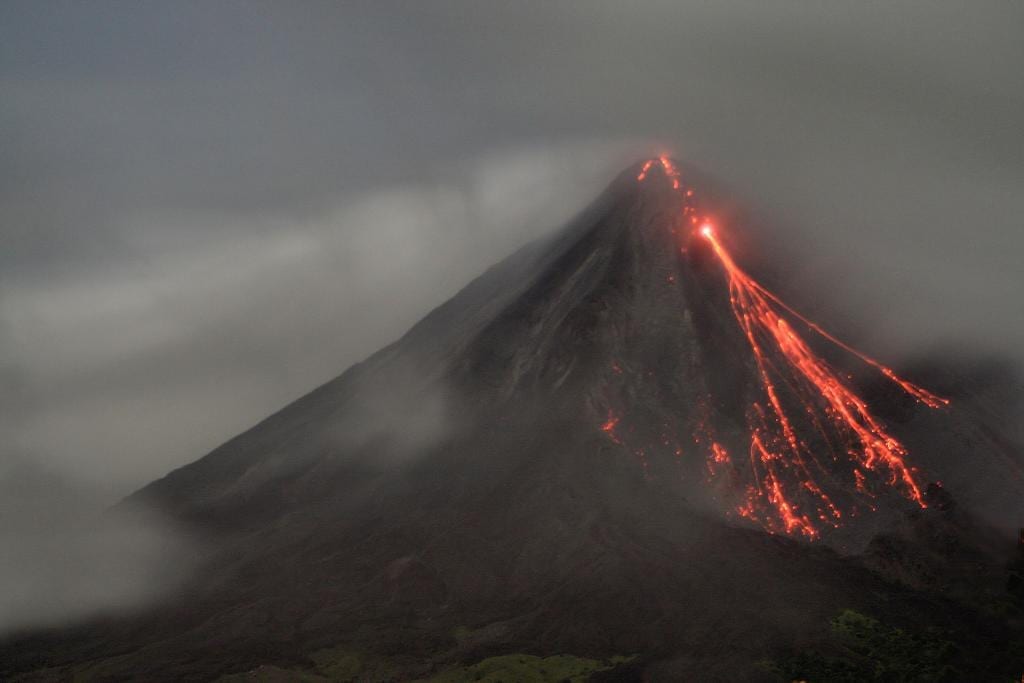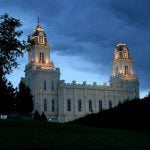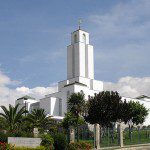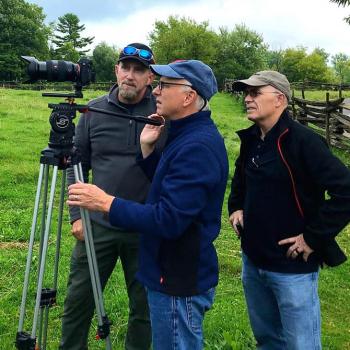
I have sat in virtually the same spot and had almost exactly the same view, albeit on a much clearer night. When I was sitting there with a geologist friend, the late Dr. Eugene Clark, it was spewing forth bus-sized blocks of basalt about every 60-90 seconds.
And then behold, there was darkness upon the face of the land.
And it came to pass that there was thick darkness upon all the face of the land, insomuch that the inhabitants thereof who had not fallen could feel the vapor of darkness;
And there could be no light, because of the darkness, neither candles, neither torches; neither could there be fire kindled with their fine and exceedingly dry wood, so that there could not be any light at all;
And there was not any light seen, neither fire, nor glimmer, neither the sun, nor the moon, nor the stars, for so great were the mists of darkness which were upon the face of the land.
And it came to pass that it did last for the space of three days that there was no light seen. (3 Nephi 8:19-23)
We’re well into the home stretch as I wind up my effort to share the notes that I’ve taken from Bart J. Kowallis, “In the Thirty and Fourth Year: A Geologist’s View of the Great Destruction in 3 Nephi,” BYU Studies 37/3 (1997-1998):
One of the common themes that can be found in almost all accounts of explosive volcanic eruptions is the darkness created by the fall of ash. This darkness may last for a few hours or a few days, and the historical descriptions mimic the terminology used in the Book of Mormon. . . . [T]he darkness is referred to as “thick,” “impenetrable,” “profound,” and “total.” It is also described as a “darkness that might almost be felt.” Some accounts even record that fires cannot be lit or can only be started with great difficulty. (176)
Professor Kowallis draws from two letters sent by Pliny the Younger, an eyewitness of the A.D. 79 eruption of Mount Vesuvius, to the Roman historian Tacitus:
Ashes were already falling, not as yet very thickly. I looked round: a dense black cloud was coming up behind us, spreading over the earth like a flood. . . . We had scarcely sat down to rest when darkness fell, not the dark of a moonless or cloudy night, but as if the lamp had been put out in a closed room.
During the 1980 eruption of Mount St. Helens, Sgt. Larry Gamache of the Yakima County Sheriff’s office reported that, in the middle of the afternoon, it was “just like midnight.” During the eruption of Bezymianny Volcano in eastern Russia, witness say that everything was “so impenetrably dark that one could not see his own hand, even if brought up to the very face.” The cloud of darkness was “very thick and almost tangibly heavy.” When Mount Tambora blew up in 1815, it was reduced in height by over four thousand feet. Witnesses recalled that “the darkness occasioned in the daytime by the ashes in Java was so profound, that nothing equal to it was ever witnessed in the darkest,” making it “impossible to see your hand when held up close to the eye.” “There was total darkness by day for three days within 200 miles of the volcano.”












